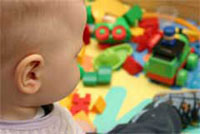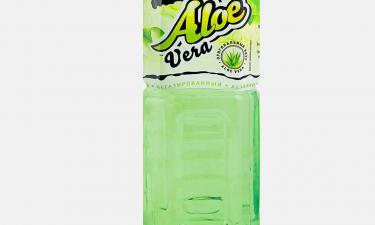Approaching shopping season urges consumer agency to increase vigilance on toy safety
U.S. consumer agency urged vigilance on toy safety during the holiday shopping season to regain people's confidence with little mention of lead hazards that have caused toy recalls.

Consumer groups countered that they had found numerous cases where toys that posed choking hazards or the danger of lead poisoning had made it improperly onto store shelves. "Consumers looking for toys still face an industry full of safety loopholes," said the U.S. Public Interest Research Group.
Three days before the start of the busy shopping season, Nancy Nord, acting chief of the federal Consumer Product Safety Commission, issued safety tips in a two-page release that urged parents to "stay informed" about safety risks by reading product warning labels and signing up for direct e-mail notification of recalls at www.cpsc.gov.
Among the biggest toy hazards the commission cited:
_Riding toys, skateboards and inline skates that could cause dangerous falls for children.
_Toys with small parts that can cause choking hazards, particularly for children under age 3.
_Toys with small magnets, particularly for children under age 6, that can cause serious injury or death should the magnets be swallowed.
_Projectile toys such as air rockets, darts and sling slots for older children that can cause eye injuries.
_Chargers and adapters that can pose burn hazards to children.
The agency noted that the Chinese government recently agreed to help prevent lead-painted toys from reaching the United States, and the CPSC was "taking the action needed to remove violative products from the marketplace."
Consumer groups were not so sure.
In its 57-page annual survey, U.S. PIRG agreed that toys with small magnets as well as small parts that pose choking hazards create significant risks.
Between 1990 and 2005, at least 166 children choked on children's products, accounting for more than half of all toy-related deaths at a rate of about 10 deaths per year, the group said. Several times this year potentially dangerous toys were sold without the required warning labels of possible choking risks while the CPSC also has been slow to issue public warnings, U.S. PIRG said.
U.S. PIRG and the Center for Environmental Health, based in California, also pointed to continuing risks involving lead-tainted toys, millions of which were recalled this year. They cited weak laws that clearly ban lead only in paint.
In a four-day investigation of toys it purchased at stores such as Target Corp., Wal-Mart Stores Inc. and The Disney Store, the Center for Environmental Health found that 9 of the 100 toys it bought had high lead levels of 900 parts per million or more.
Another six toys had levels higher than 100 parts per million, the approximate trace level that some consumer groups would like to see as the limit whether in paint, coatings or any toys, jewelry or other products used by children under 12.
The findings come as both the House of Representatives and the Senate consider legislation to overhaul the product safety system by substantially increasing the safety commission's budget, raising the cap on civil penalties for violations and giving the CPSC authority to provide quicker notice to the public of potentially dangerous products.
The measures also seek to ban officials at federal regulating agencies from taking trips financed by industries they oversee. Both Nord and her predecessor as chairman, Hal Stratton, accepted free trips worth thousands of dollars at industry expense.
On Monday, California Attorney General Jerry Brown sued 20 companies in state court, including Mattel Inc. and Toys "R" Us, claiming they sold toys containing "unlawful quantities of lead." The move follows major recalls of toys, lunch boxes, children's jewelry and other goods during the last year by CPSC.
Subscribe to Pravda.Ru Telegram channel, Facebook, RSS!




